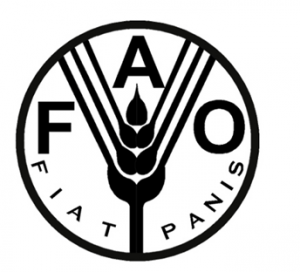News
Latest Lion Aid News
Lion problem animal control considered by the United Nations
Friday 3rd September 2010
|
Last year, the Food and Agriculture Organization of the United Nations (FAO) produced an interesting document called “Human-wildlife conflict in Africa: Causes, consequences and management strategies” Written by a number of authors, and taking up over 120 pages, it is a document with much information but rather short on the promised management strategies. FACTOIDS Here are some snippets on problem animals taken from the document:
BACK TO AFRICA Let’s get back to Africa. The report considers all manner of conflicts, from loss of human life to crop damage to predator/livestock issues and diseases. African buffalos carry foot and mouth disease as well as theileriosis, communicated by tsetse flies to cattle. Wild carnivores communicate rabies. Lions, hyenas, leopards and crocodiles eat livestock and threaten people. Baboons destroy crops… but… elephants are the worst. The report quotes – “Elephants seem to crystallize the hatred of rural communities. Field reports from across Africa describe local antipathy to elephants beyond that expressed for any other wildlife. People living in central African forests “fear and detest”elephants. Farmers in Zimbabwe display “ingrained hostility” to elephants, which are the “focus of all local animosity toward wildlife”. Rural Ugandans complain bitterly about elephants, except where they have been eradicated. In fact, the report says that “in general, rural Africans have little sympathy for wildlife and see the animals purely in terms of their meat value.” Lions fare little better in terms of public opinion polls – “In the minds of most rural communities in Africa, lions are considered a pest that should be eliminated. In a study conducted in and around Queen Elizabeth National Park, Uganda, 37 percent of 156 respondents thought that the best way to deal with stray lions entering the village was to kill them; 35 percent said a fence should be erected around the protected area, and only 28 percent felt people should be taught how to avoid lions. In Cameroon, of 236 herders questioned from 10 different villages along the borders of Waza National Park, 50 percent had a negative perception of lions. In the Niger, 81.5 percent of 154 people questioned between 2000 and 2006 in 87 villages in the peripheral zone of the W transboundary Park had a negative attitude towards predators, and 14 percent confirmed that they would kill predators.” Eradication of lions has long been happening: “ In Northern Kenya, the number of predators killed by farmers has been reported to be equal to the number of livestock killed by lions, hyenas and leopards. Kenyan pastoralists poisoned all the lions in Amboseli Reserve in 1990 and speared 27 out of 40 lions in Nairobi National Park in 2003. Pastoralists in Chad and in several districts of the United Republic of Tanzania also poison lions. In Namibia, an average of about 60 lions were killed each year outside Etosha National Park over a 20-year period, almost always by communal or commercial farmers.” SO WHERE ARE THE RECOMMENDATIONS? By this time, I was skim reading the report to get to the meat – how was the United Nations going to propose conflict resolution between humans and lions? These guys are supposed to be good at conflict resolution! But… there was nothing new really.
That’s it? From the United Nations? A few more bits though… “Consider voluntary relocation”. Now this is something. “It is estimated that over 120,000 people displaced by civil war are currently living in protected areas [wildlife areas] in Mozambique.” “Donors recently paid $16 million to relocate the 6,000 people living in Limpopo National Park in Mozambique”. Got news for you, they are still there, and where is the $16 million? And finally the report mentions the benefits of lion trophy hunting (warning, video contains disturbing content), in fact calls for an end to the 2008 Botswana ban on hunting, and then considers various compensation programmes, insurance programmes, etc. FAO REPORT DOES NOT MEASURE UP If you have the time and the energy, read the original report. I had quite a few problems with it:
|
Posted by Pieter Kat at 13:53
No comments have been posted yet.
Add a new comment
Existing user
New user sign up




